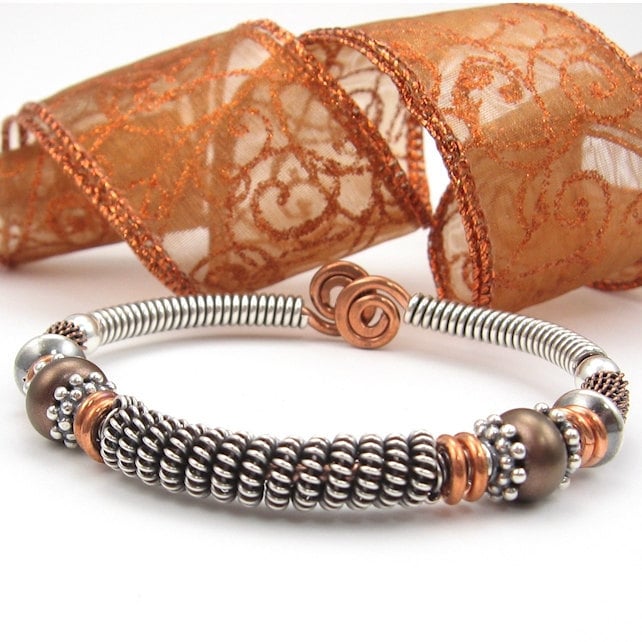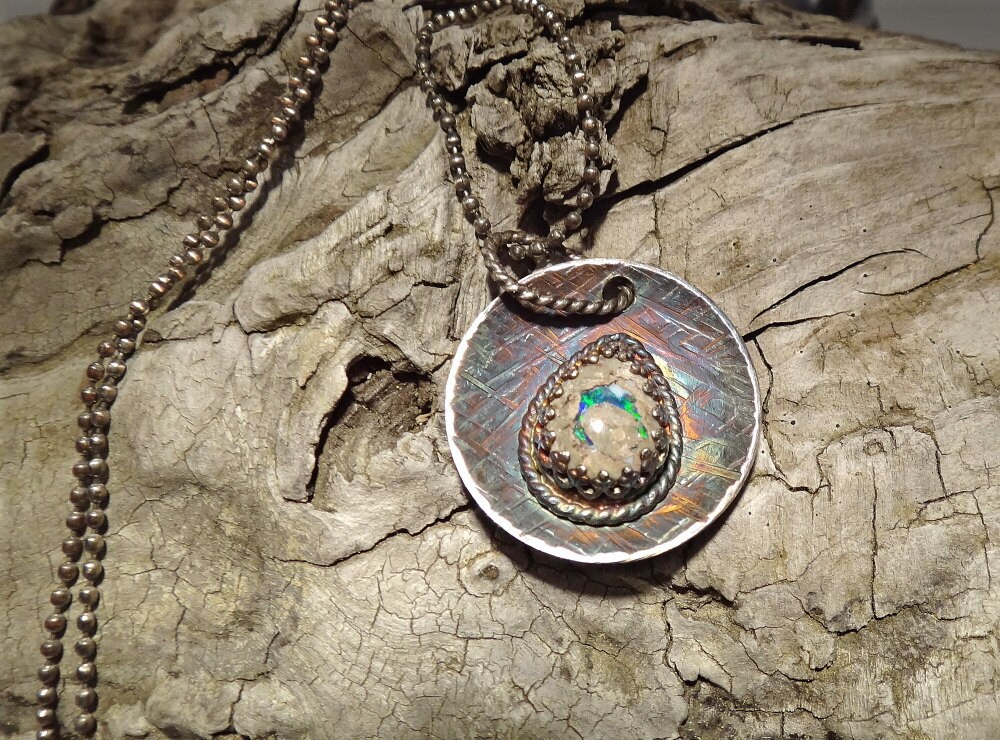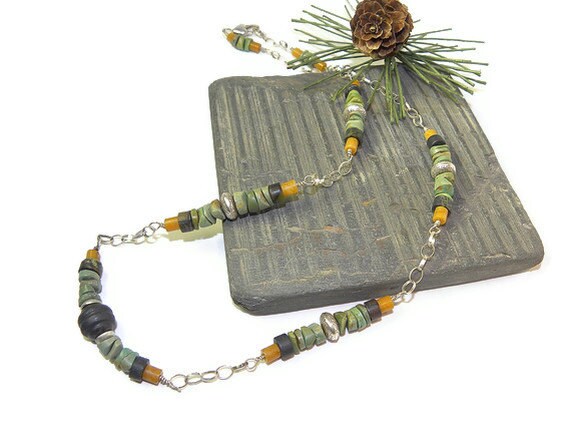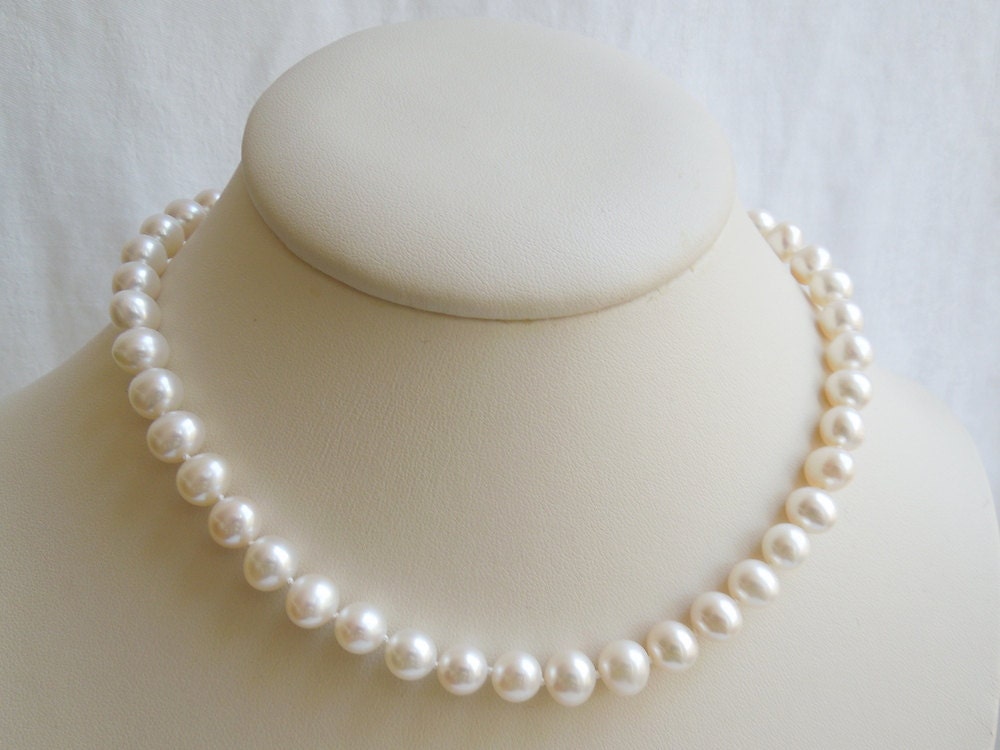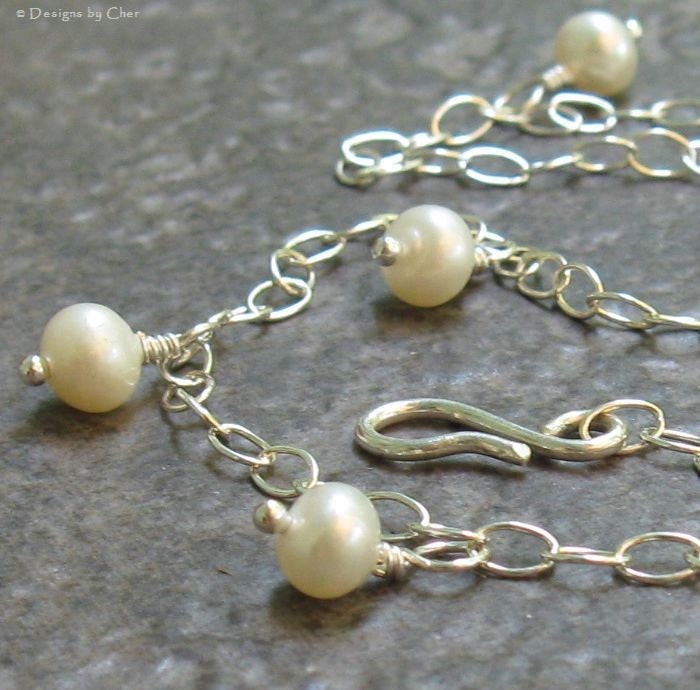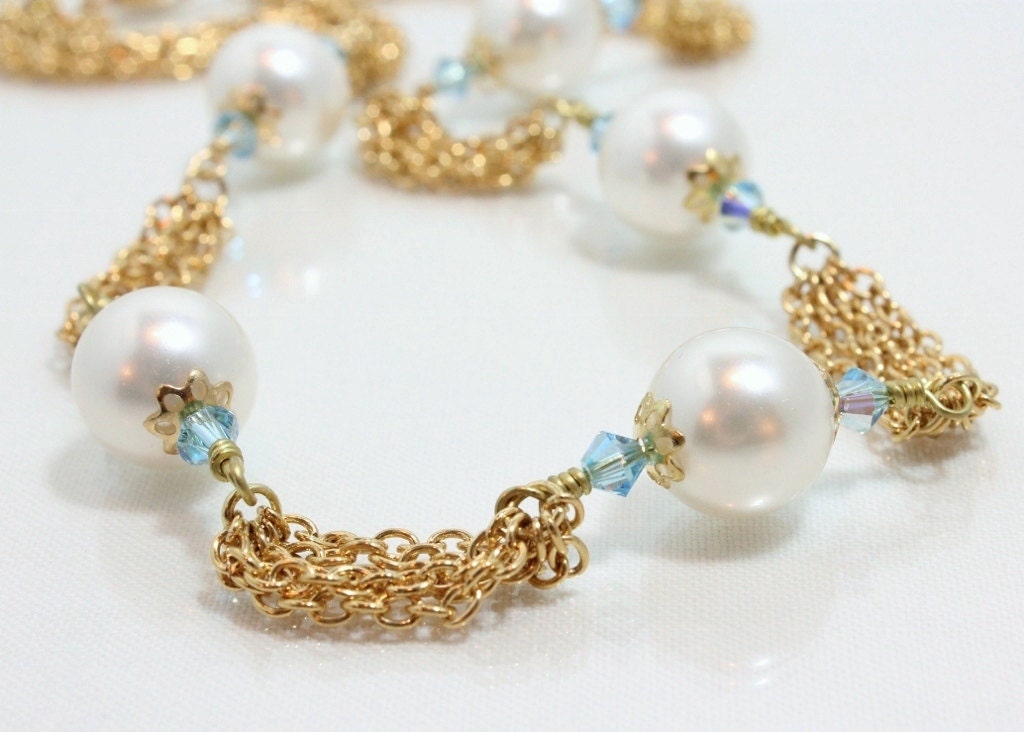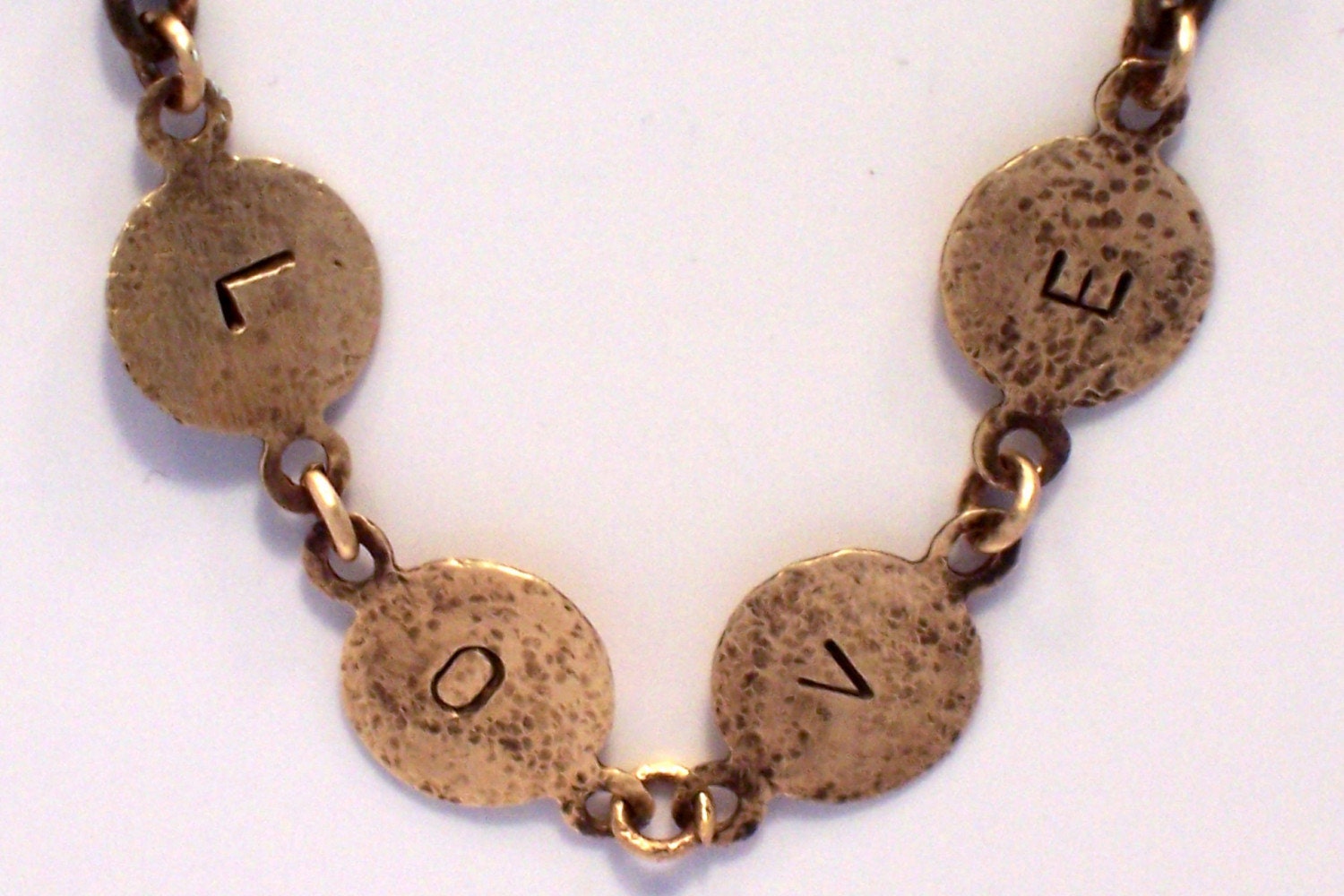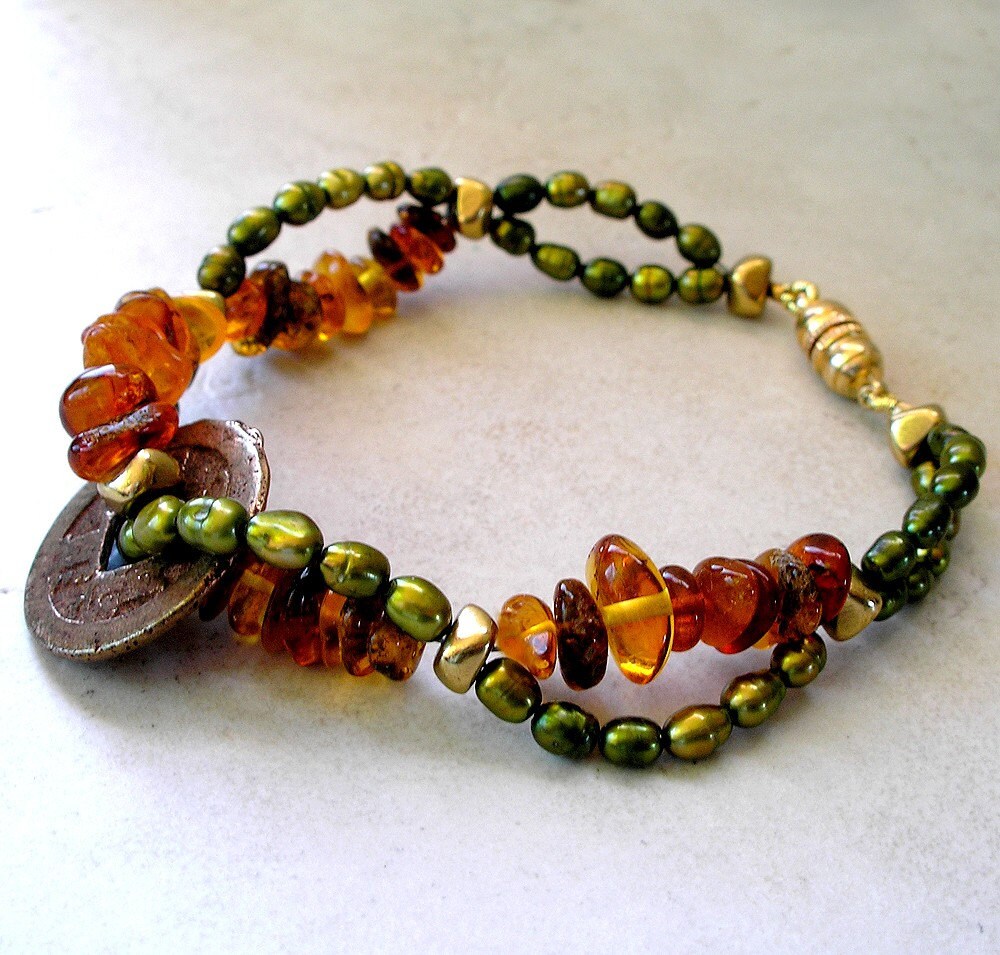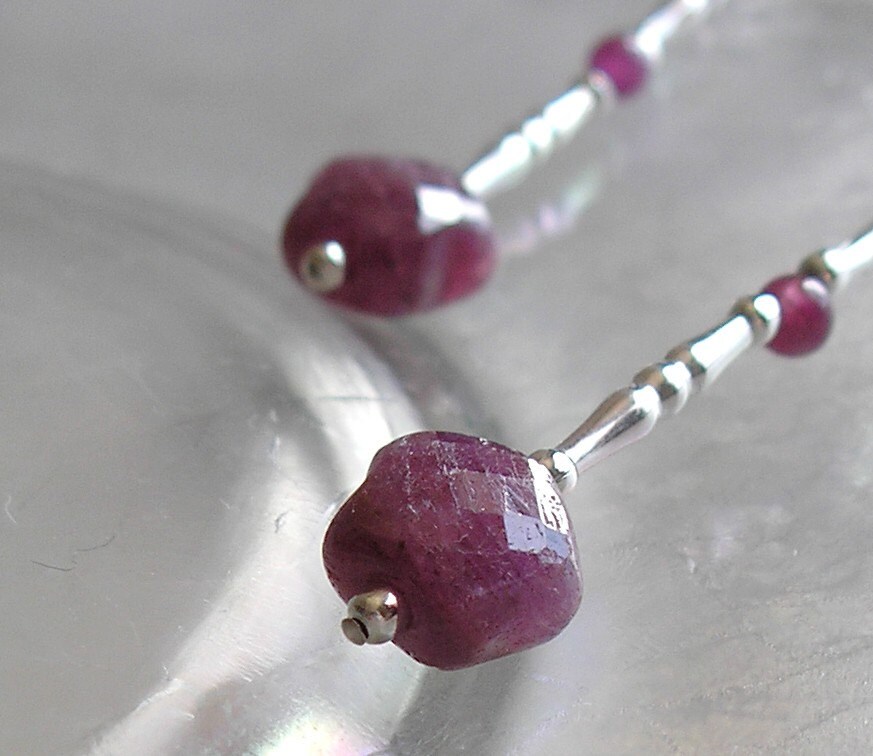Article submitted by JET Member
|
|
Jill from OzmayDesigns says: Random thoughts...
Wearability.. Sometimes I see things that are pretty or cool in
concept, but not
practical to wear. If you plan to wear a piece (not
just collect) then you can't
forget about wearability. Is it
compatible with your lifestyle?
Mixed metals: It is no longer a fashion faux pas to wear mixed
metals.
Variety in metals is a good thing.
Denise Woodhouse from LoveStoneArts:
Our customer base is limited if they believe that accessories
must
always match. Here are a few ways to wear chains, pendants and necklaces that make me happy:
I like to wear necklaces in unexpected
ways that make a whimsical statement.
For instance a big vintage rhinestone piece with a simple cotton sundress
or very feminine pearls and gemstones with a chambray shirt and jeans.
To feel a sense of history I layer a big thick hank of seed beads
with
a turquoise necklace and a unique pendant. A mood is evoked; thoughts of trading posts and mountain rendezvous.
I like to borrow a classic design and then give it a rustic or
abstract twist.
A short sturdy chain allows an art pendant to be worn outside of a collar similar to a cameo brooch. Adding a couple more pendants on chains or a looped long rope of beads completes a fun updated Victorian look.
For necklaces and pendants that have a special sentiment like my
stamped personalized pendants or the polymer clay beads the kids and I made when they were small, I like to wear them long. All through the day I lift these pieces, look at them and smile! | |
| Donna Arena from DonnasArtisanDesigns:
Save and re-use desiccants you get in medicine bottles and other
places in the baggies you keep your silver jewelry in.
Ask your friends to
save them for you!!
If you don't have those use small pieces of chalk to absorb
moisture.
I love to go on treasure hunts to estate sales, thrift shops, etc…
I take a couple things with me to help in my search. A loupe and a magnet. Obviously the loupe will help you see any makers marks from collectible jewelry lines such as Listner, Monet, Corro, etc…get to know them they could have a great resale value and be valuable to some collectors.
If you don’t want to buy a loupe take a magnifying glass.
A little research on the internet will go a LONG way to help discover valuable collections, or at least identify precious metals. Why a magnet? You can always tell if something ISN’T sterling by holding a magnet to it. If the magnet catches, it is NOT sterling. |
|
| Melanie See from seemomster says
Do NOT wear perfume where it will come up against natural pearls.
If you are wearing a pearl necklace or earrings, DON'T dab it behind your ears! Wear it on your wrists, behind your knees, or in your décolletage instead! Also - spray your hair with hairspray BEFORE you put your pearls on!
Inspect knotted pearls annually. If the strand is fraying, take them
to a reputable jeweler to have them re-knotted.
Store pearls separately from stone/metal jewelry. Pearls can
scratch!
|
|
| Cher from DesignsbyCher says:
NEVER dip pearl jewelry (like the anklet above) or shell -
mother or pearl, abalone etc - in a silver/gold jewelry cleaner.
The sulphur in the silver cleaner will kill the
luster,
and the ammonia in the dip will eat them! Nancy Russell from NancysCrystalFantasi says:  Something I discovered when redoing a piece Something I discovered when redoing a piecefor a customer is that many people do not know the difference between karat gold, gold filled, and gold plated metals. Karat gold is pure (24 karat) gold that has been mixed - or alloyed -with other base metals, which makes it less costly and more durable than pure gold. Gold purity is expressed in parts of 24, so 14 karat gold is fourteen parts gold and 10 parts other metal. Gold filled jewelry is made with base metal that has been mechanically bonded with heat and pressure to a thin sheet of rolled out karat gold that must be at least 10 karat. It cannot be melted down and cast like karat gold can, but it is much more durable and long-lasting than gold plated metal. Gold plated jewelry is made with base metal that has a microscopic layer of gold (millionths of an inch thick) of less than 10 karat gold bonded to the base metal. Because it is so thin, it scratches easily and can wear off fairly quickly. Bob of Jewelry24Seven adds: The chart on the right shows how much gold is actually in jewelry, or how karat value relates to percentage. The most popular type of gold jewelry is 14 karat. Very few people realize it, but 14k gold is only 58.33% pure gold. The rest - over 40% is mostly copper. Alloy can be ANY metal combined with gold. 14k gold tarnishes or oxidizes, but it just appears to get redder or a bit darker in color so it may go unnoticed. To brighten up your 14k gold jewelry use the same type of polishing cloth described above used for silver care. This will bring your 14k jewelry back to its original color, luster and beautiful shine! More on jewelry Metal Facts ... |
|
Dione from LittleAppleNY says ... I'm hardly a font of jewelry wisdom, but I'll add that toothpaste---the old-school white variety---will do a good job of cleaning silver jewelry (like my silver ring at right) in a pinch. |
|
Michele from malves1009 says:
Clean brass before aging, or giving it an antiqued finish
like my LOVE Bracelet above. I use Bar Keeper's Friend cleaner to polish brass. Sometimes I like brass without aging - it looks like gold.
Easy aging can be done with LOS
(liver of sulphur), or on a stove top. |
|
| Blanche from BlancheB says:
A little vodka goes a long way for cleaning diamonds!
Also - be bold! Get out of your comfort zone.
Before Etsy it would
have never occurred
to me to wear bobby pins, especially those black boring ones. I love making them and wearing them now, too!
Try a brooch on a
sweater or add to a headband.
If you've never worn an anklet, go for it!
Jewelry is a great way to spice up your style
and an outfit you are
bored of.
Recycle old gold. Take those dated pieces you will
never wear again like that
orphan earring, jewelry
with missing stones etc.. and have someone make you
something new or sell it for cash, and use the money
for
something fun like a cruise to Mexico - like I did!
|
|
| Elizabeth Holmes-deForest from Foret says:
This is sort of an aside and has to do more with
vintage
jewelry and buttons, which are those amazing
early plastics. Some of
those plastics are over 150
years old and a lot of them contain
chemicals which
will EAT metals. I noticed this when I threw a bunch
of old buttons together, some old real rhinestone buttons
which had
metal bezels. They just about disintegrated!
So ... If you have early plastics, keep them away from metal.
Also, I
have noticed that some of the young amber which is
classified as
copal reacts to air. The surface will craze.
So, you have to keep it air
tight. Not so with the real
Baltic amber which is millions of years
old.
(There is another kind of copal which is an amber and early
plastic composite and extremely expensive, old and hard to find)
Some basics on grading gemstones…or...
what the heck does AAA mean???
What The Gemstone Grades Mean
As with diamonds, colored gemstones are valued and rated with
the 4
C’s: cut, clarity, color and carat. Once the gemstone has
been
evaluated on these four criteria, a final grade is given to
the gem.
The final grade falls on a scale of AAA – D, with
AAA being near
perfect and D being a poor quality gemstone.
A Rating: An A rated gemstone is a good quality gemstone.
The gem is
well cut, has a good transparency and lets light through,
and has
few inclusions. For top quality gemstones, there is also an
AA and
AAA rating. These ratings are reserved for exceptional
gems,
especially with precious stones like rubies, emeralds and
sapphires.
Semi-precious stones such as amethyst and garnet
seem to pass more
easily with a AA rating.
B Rating: B rated gemstones have minor to light inclusions,
and the
color of the stone isn’t the optimal color. The stone is
still
transparent, however, and many B quality stones are still
used for
smaller gemstones in jewelry.
C Rating: C rated gemstones have visible inclusions,
as well as
portions that are not entirely transparent. The
translucency does
not allow as much light to pass through,
which makes these stones
less sparkly and more flat (dull)
to the eye. C rated gemstones are
rarely used in larger sizes,
and are sometimes used as chip stones
in pave and micro pave sizes.
D Rating: D rated gemstones are heavily included, obviously
opaque to slightly translucent and allow minimal light through.
D rated gemstones are
suitable for use as cabochons, beads or
rock-like pieces, but do not have a
high value.Still, their color
allows them to be made into pretty and affordable jewelry like the
gorgeous sterling silver and natural ruby earrings pictured above!
The JETs are very knowledgeable when it comes to the jewelry
we sell. Buying your jewelry from a JET member is a smart thing
to do, because you can be sure you're dealing with an honest person
who knows a lot about the jewelry they sell. If you DO buy jewelry
elsewhere, be sure to ask questions about the metal quality and the
gemstones you are buying. An educated customer is a
happy customer - so don't be afraid to ask questions! |
|
Jewelry On Etsy JET Team Handmade Jewelry Artists

Etsy Jewelry Artisan Handmade Necklace Bracelets Rings
